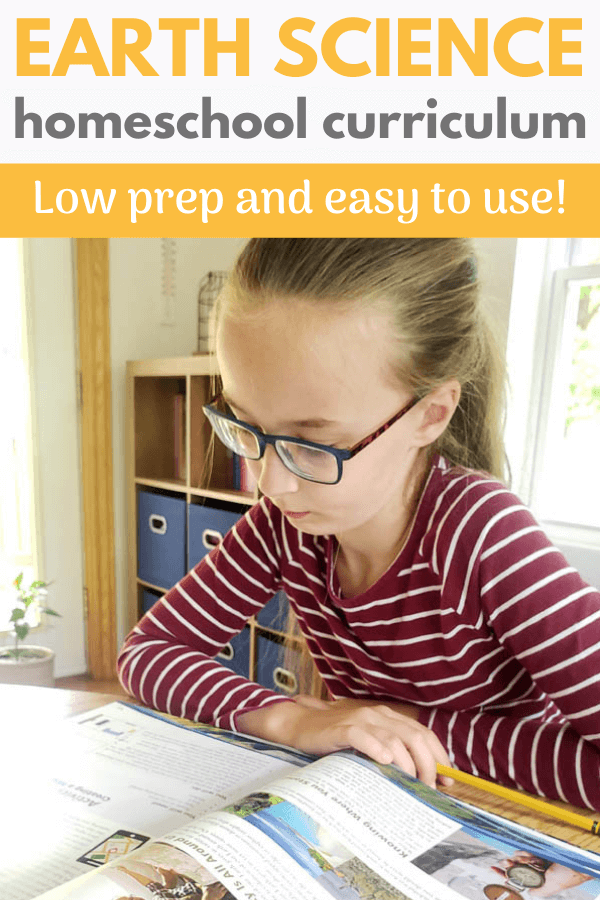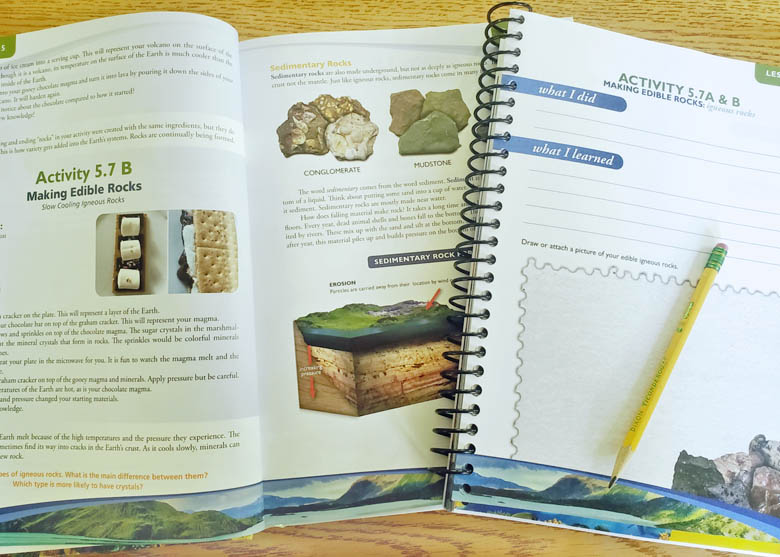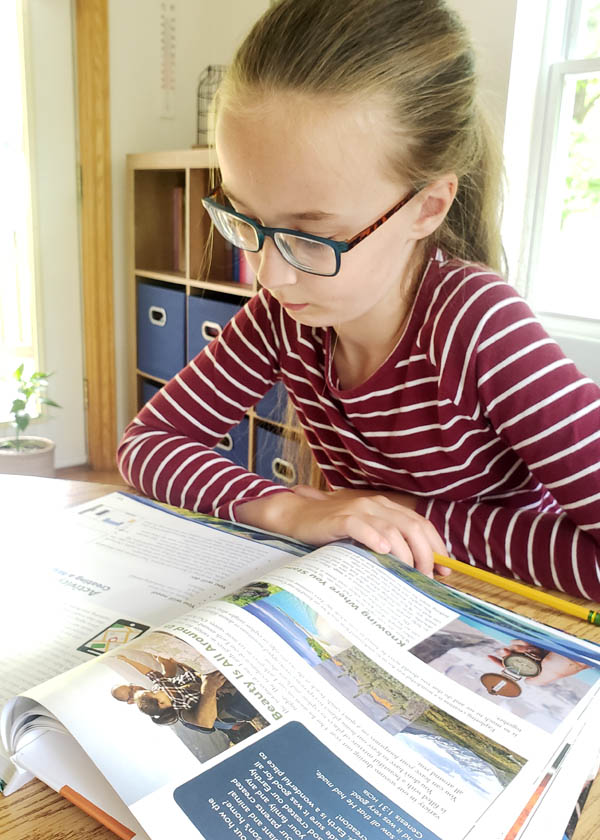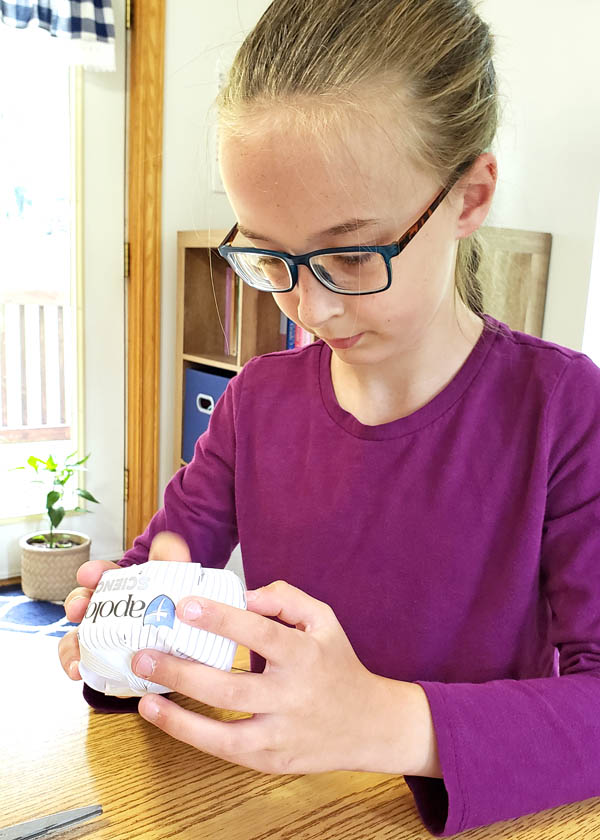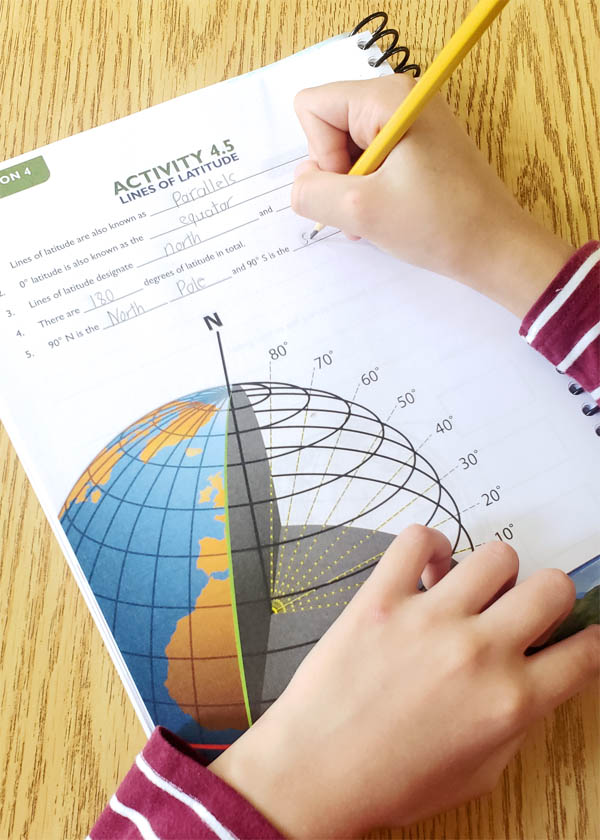Easy-to-Use Homeschool Earth Science Curriculum
Simplify your elementary science lessons with this easy-to-use homeschool earth science curriculum based on Charlotte Mason’s philosophies.
A few months ago, my daughter told me that science was her least favorite subject.
When I began asking why, I learned that she didn’t enjoy the workbook style of the curriculum we were using.
That’s why I was delighted to have the opportunity to try out a new-to-us homeschool science curriculum—one that my daughter is actually excited to use!
I received this product for free and was compensated for my time. All thoughts and opinions are my own. I was not required to post a positive review. This post also contains affiliate links. If you click on an affiliate link and make a purchase, we will receive a small commission. See our Disclosure Policy for more information.
Apologia’s Easy-to-Use Homeschool Earth Science Curriculum
This year my daughter will be using Exploring Creation with Earth Science, a biblically-based homeschool earth science curriculum for elementary students. With its strong emphasis on God as the Creator, this course is an excellent choice for any Christian family.
Exploring Creation with Earth Science includes 14 in-depth lessons covering the geosphere, the hydrosphere, the atmosphere, the biosphere, weather, and more.
This curriculum is so easy to use, with very minimal prep time required. The accompanying notebooking journal contains a suggested weekly schedule with lessons already planned out. Easy-peasy!
The suggested schedule is set up for doing science lessons 2 days each week for 28 weeks. I love that this schedule allows plenty of extra time for field trips, nature study days, or science projects.
If you decide to do science 3-5 days each week, you could actually complete 2 Apologia Young Explorer courses in 1 year. Take advantage of the flexible schedule to make the course work for you!
4 Ways Kids Learn with Apologia Earth Science
Exploring Creation with Earth Science is based on Charlotte Mason’s educational philosophies. Instead of completing boring worksheets, kids will learn through reading, notebooking, narration, and hands-on activities.
Reading
The earth science textbook is a well-written text that doesn’t really feel like a textbook at all. Much like a living book, it is written directly to the student in a easy-to-read, conversational style.
The textbook is full of gorgeous photographs and colorful illustrations that will catch a child’s interest and help them understand scientific concepts more easily.
Narration
While reading through the textbook assignments, students are periodically asked to stop and retell in their own words what they have learned.
This Charlotte Mason-style narration is a much more meaningful way to reinforce learning than traditional worksheets will ever be. Narrating, or telling back, requires a deeper understanding of the material than merely reciting a list of facts.
And think about it for a moment . . . what child doesn’t LOVE to have a parent’s undivided attention while they tell about something they have just discovered? I love that narration capitalizes on natural excitement that kids experience when they learn something new.
Hands-On Activities
In Exploring Creation with Earth Science, students learn how to use the scientific method through age-appropriate hands-on projects and activities.
For example, in one lesson, students use an orange or a grapefruit to demonstrate how a round earth is difficult to create on a flat map. In another lesson, they use a hard-boiled egg to discover how tectonic plate movement works.
Hands-on learning is what really brings science to life, and this curriculum provides plenty of opportunities for kids to explore scientific concepts in an understandable way.
Notebooking
My daughter’s favorite part of Exploring Creation with Earth Science is the Notebooking Journal. She loves to write and create, and the Notebooking Journal encourages her to do just that.
The Notebooking Journal is the perfect accompaniment to the textbook. It is also available in a junior version with primary-ruled lines to make writing easier for younger students.
Inside there is a place for your child to complete every single assignment throughout the entire year. Everything is laid out in the order in which the assignments occur, which makes it so easy to just open and go.
Some types of pages included in the Notebooking Journal are:
- Activity reports
- Minibooks
- Coloring pages
- Crossword puzzles
- Note-taking pages
- Review pages with open-ended questions
Some of the pages (such as the coloring pages) are not included in the suggested schedule. You can pick and choose which of these “extra” pages you’d like your child to complete.
But don’t feel pressured to complete every single activity in the Notebooking Journal! The publisher recommends that you choose the assignments that are best suited to your child.
Learn More About Exploring Creation with Earth Science
Watch the video below to see an up-close look at the homeschool earth science curriculum from Apologia.
Exploring Creation with Earth Science Giveaway
Enter below for an opportunity to win an Exploring Creation with Earth Science set! Two winners will be chosen. Giveaway is open to residents of the U. S. and Canada only.

